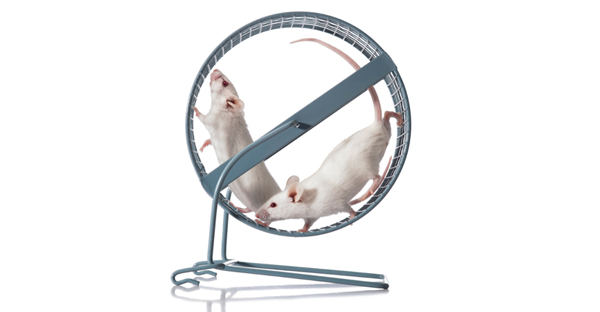

As an animal rights activist, I am very curious about your rat studies. My question is hypothetical. If the politics of research funding were not so animal model dependent, and you would have been funded for the China Study without first doing the rat research, do you feel your conclusions would have been significant enough without the rat work to have come to the same conclusions in your book?
In other words, you say there was no way that you could have done the work without the rats, but the massive epidemiological study, to me, seems so much more significant and applicable to human health, that I wonder if the rat work was truly necessary?
This is a question that I have long thought about. The answer is “No”, the China Study would not have been so clear, although I say this because of somewhat indirect considerations. It is true that the rat and mice studies illustrated something about animal protein that had never before been demonstrated, especially with the depth, completeness and convincing nature of the observation. That is, it directly proved the carcinogenic nature of animal based protein, something that would never have been seen in human studies. In human studies, we only have correlation or observational findings and other researchers would have dispelled such associations as not being real. Indeed, such associations were previously seen in earlier human studies and no one made anything of them–indeed refused to believe that they were reliable.
What we did in the rat and mice studies, in effect, was to use the experimental criteria routinely used in science to establish whether a chemical is carcinogenic, a procedure widely accepted by almost everyone. Indeed, this is wherefrom the public also learns about chemical carcinogens–rat and mice studies all. In the process, we learned that instead of the minute concentrations of carcinogens being the main human cancer factors, it is a combination of nutrient imbalances that do this, especially in a highly integrated fashion.
I cannot conjure up any other research method that would have done what we did with our rat and mice studies. Then, importantly, when we subsequently saw the correlations that we did in the human study in China, they were so much more impressive that they would otherwise have been.
The other issue here is the fact that the China Study was not the kind of study according to most researchers, that does anything more than suggest hypotheses. It proves nothing, so the thinking goes. I disagree, especially when we know from the more mechanistic studies such as in the rat and mice studies that this all makes sense. There is, of course, much more I could say here.
Copyright 2025 Center for Nutrition Studies. All rights reserved.
Deepen Your Knowledge With Our
Plant-Based Nutrition
Certificate
Plant-Based Nutrition Certificate
- 23,000+ students
- 100% online, learn at your own pace
- No prerequisites
- Continuing education credits











